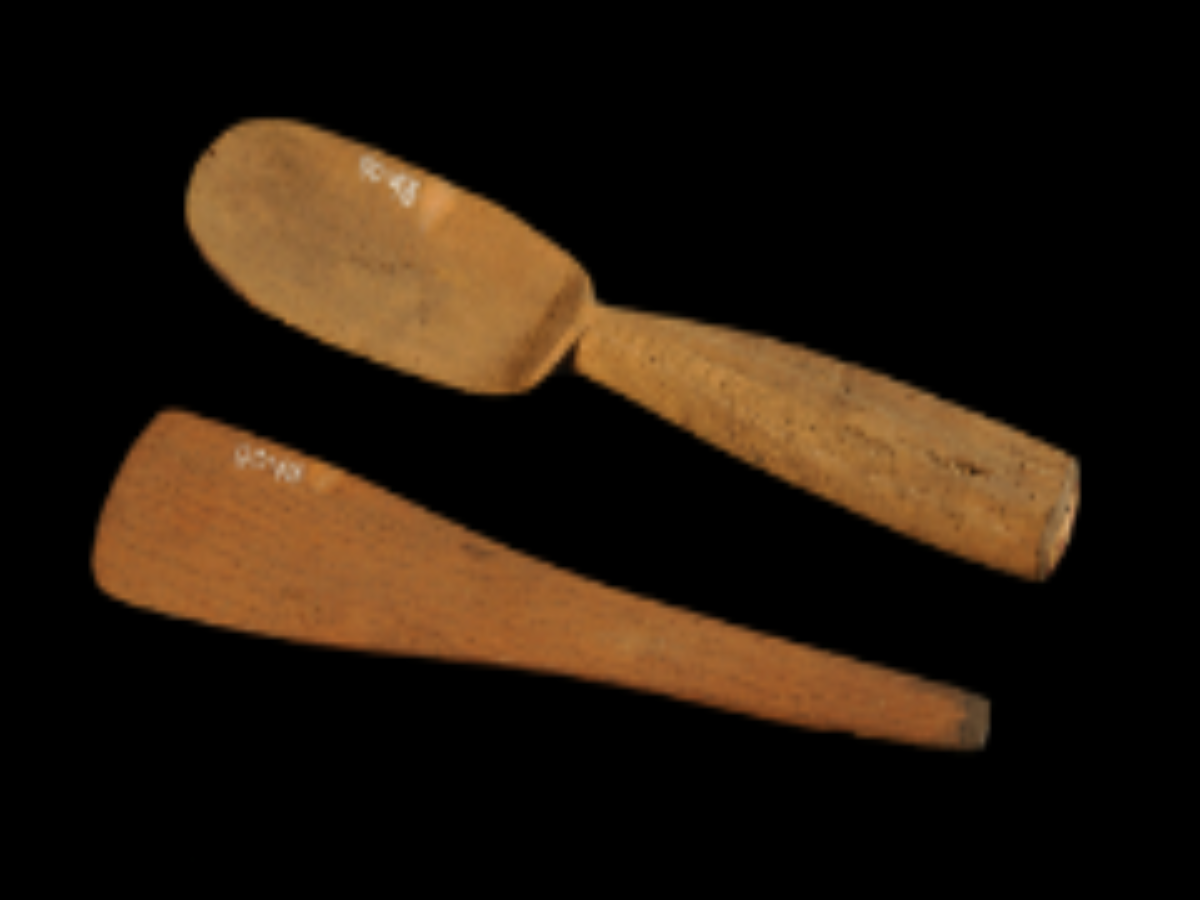State
Tribe Name
Art Type
short description
The wooden spoons of the Zemi Naga tribe are good representations of both traditional craft and practical design that resonate with the lifestyle and culture aesthetics of the tribe. The Zemi Nagas, also called Zeme or Zeliang Nagas, inhabit the tri-junction of Nagaland, Manipur, and Assam, while many are in Peren district of Nagaland. These wooden spoons take two distinct shapes, both made from locally available hardwood. One spoon has a lower end that is elevated, making it rest slightly raised when put down on a surface; thus, it keeps the eating surface relatively clean and out of contact with the ground or floor. Long, smooth, and almost circular in shape, its handle gives a comfortable grip for stirring or serving.
Thumbnail

Filter Postion
Left
Filter Background
Off
Theme
Filter Header Image

content
Image

description
The wooden spoons of the Zemi Naga tribe are good representations of both traditional craft and practical design that resonate with the lifestyle and culture aesthetics of the tribe. The Zemi Nagas, also called Zeme or Zeliang Nagas, inhabit the tri-junction of Nagaland, Manipur, and Assam, while many are in Peren district of Nagaland. These wooden spoons take two distinct shapes, both made from locally available hardwood. One spoon has a lower end that is elevated, making it rest slightly raised when put down on a surface; thus, it keeps the eating surface relatively clean and out of contact with the ground or floor. Long, smooth, and almost circular in shape, its handle gives a comfortable grip for stirring or serving.
The other is flat, with a relatively broader upper portion, and tapers to a narrower lower end. Such a shape is best for scooping or spreading; it might be put to use for food preparation or communal meals. Both beautiful and simple, the forms of the spoons clearly represent the Zemi Naga conception of utilitarian objects, in which functionality is paired with minimalist beauty. The carving of wooden spoons is part of the generalized cutting-craftsmanship among the Zemi Nagas, usually taken from parent to children and grandchildren. Such spoons are not only instruments but also cultural artifacts that tell much about the rootedness of the community-to-nature and daily life practices.
The other is flat, with a relatively broader upper portion, and tapers to a narrower lower end. Such a shape is best for scooping or spreading; it might be put to use for food preparation or communal meals. Both beautiful and simple, the forms of the spoons clearly represent the Zemi Naga conception of utilitarian objects, in which functionality is paired with minimalist beauty. The carving of wooden spoons is part of the generalized cutting-craftsmanship among the Zemi Nagas, usually taken from parent to children and grandchildren. Such spoons are not only instruments but also cultural artifacts that tell much about the rootedness of the community-to-nature and daily life practices.
Image Mode
landscape
promoted
On
Verified
Off
